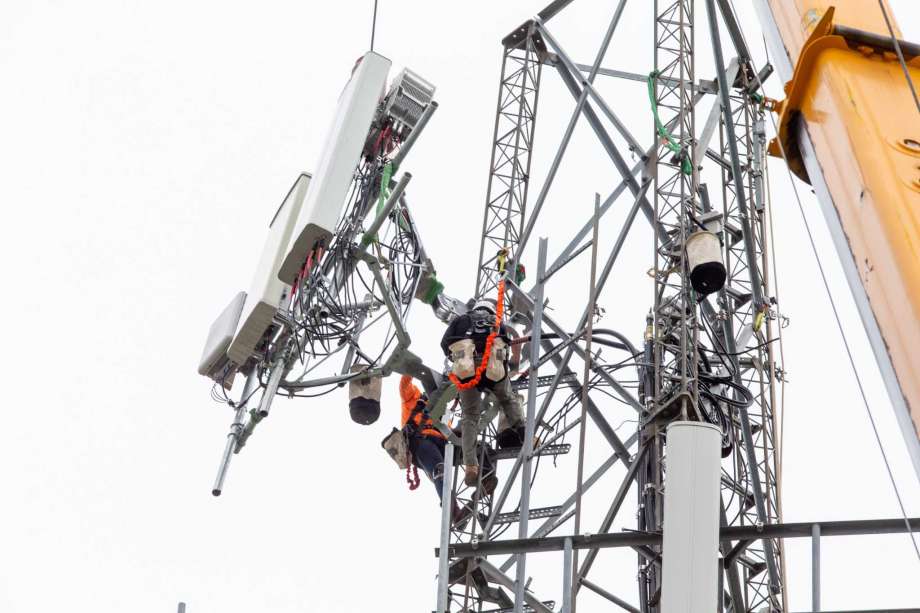Analysis: COVID, 5G and the prevalence of conspiracy theories
-

The construction crew installing the new transmitters and structural support to the tower to updated with new 5g technology during 5G Infrastructure Installation at Mac Gregor Park area, Tuesday, September 8, 2020, in Houston.
The construction crew installing the new transmitters and structural support to the tower to updated with new 5g technology during 5G Infrastructure Installation at Mac Gregor Park area, Tuesday, September 8,
Photo: Juan DeLeon/Contributor
The construction crew installing the new transmitters and structural support to the tower to updated with new 5g technology during 5G Infrastructure Installation at Mac Gregor Park area, Tuesday, September 8, 2020, in Houston.
The construction crew installing the new transmitters and structural support to the tower to updated with new 5g technology during 5G Infrastructure Installation at Mac Gregor Park area, Tuesday, September 8,
Photo: Juan DeLeon/Contributor
This originally appeared as part of our daily coronavirus newsletter. Sign up here to get it delivered to your inbox.
People actually believe that 5G wireless technology causes COVID-19, or that the pandemic was actually planned out. How many people? More than you might think.
It’s not a new thing. Back in 1903, newspapers reported on something called “radiophobia,” and every advancement in communication results in new, unfounded paranoia.
The 5G conspiracy idea is that the millimeter spectrum used in the ultra-wide band wireless technology actually causes the virus and, let’s be clear, there is no scientific evidence to support it.
A study published (by some researchers with surprisingly high-falootin’ credentials) in July providing what passes for evidence of the theory was unceremoniously retracted shortly thereafter.
Apparently 5G waves “are similar to shapes of hexagonal and pentagonal bases of their DNA source, leading to the conclusion that “these bases could join to each other and form virus-like structures such as coronavirus.”
One researcher responded that “this article isn’t so much a scientific paper as a representation of what a moron thinks a scientific paper is.”
The reality that there is no basis in fact for these ideas is not a deterrent.
The Pew Research Center released a survey in June showing that 71 percent of Americans had heard that the virus was a great big government conspiracy. Of the people who had heard something like that, 36 percent believe it is “definitely” or “probably” true.
If my math is right, that’s 25 percent of Americans who believe that the coronavirus was a scheme to begin with. Another 13 percent said they weren’t sure.
Of course, as one news source wrote, it’s valid to note that it’s new technology: “the fact remains that there are no studies confirming the massive network required to set up 5G infrastructure will not affect health.”


